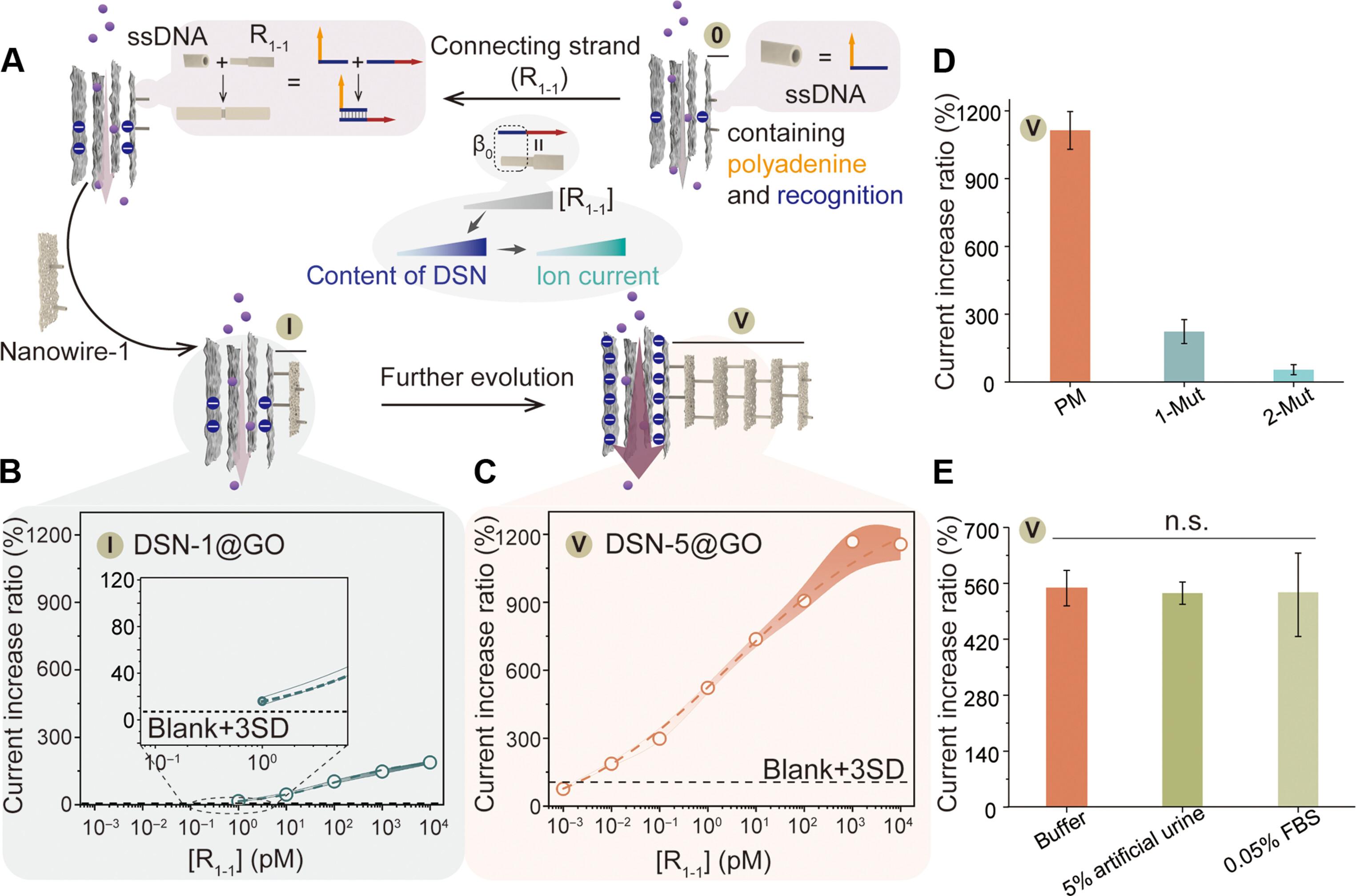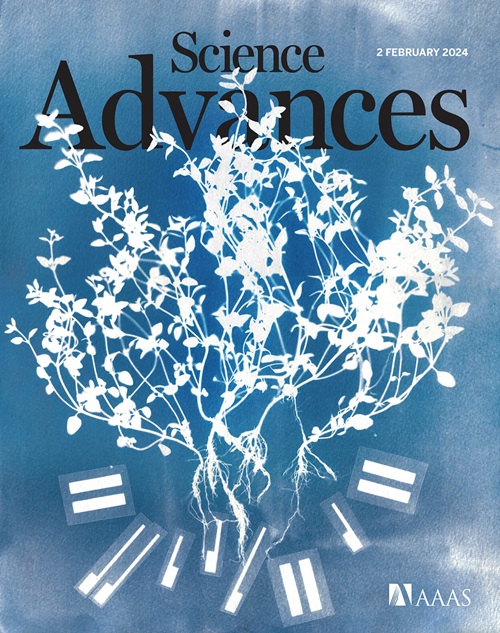通过调节仿生脂膜成分精确控制跨膜电流
IF 11.7
1区 综合性期刊
Q1 MULTIDISCIPLINARY SCIENCES
引用次数: 0
摘要
离子通过生物离子通道的传输不仅受其结构特征的调控,还受作为纳米通道载体的磷脂膜成分的调控。受脂膜成分对离子电流的调节作用(如阴离子脂对链霉菌 A 的 K+ 通道的激活作用)的启发,我们提出了一种基于 DNA 纳米技术与二维氧化石墨烯(GO)纳米片相结合的仿生纳米通道系统。通过设计多分支 DNA 纳米线,我们在 GO 表面组装了可编程的 DNA 支架网络(DSN),以精确控制膜的组成。将 DSN 层数从一层调节到五层,可增强 DNA 的组成,使离子电流最大增强 12 倍,这主要是由于电荷效应。DNA 酶的加入促进了膜成分的可逆调节,实现了离子电流的循环转换。这种方法为制造具有高效、可调离子传输的装置提供了途径,适用于质量传输、环境保护、仿生通道和生物传感器等多个领域。本文章由计算机程序翻译,如有差异,请以英文原文为准。

Precise control of transmembrane current via regulating bionic lipid membrane composition
The transport of ions through biological ion channels is regulated not only by their structural characteristics but also by the composition of the phospholipid membrane, which serves as a carrier for nanochannels. Inspired by the modulation of ion currents by lipid membrane composition, exemplified by the activation of the K+ channel of Streptomyces A by anionic lipids, we present a biomimetic nanochannel system based on combining DNA nanotechnology with two-dimensional graphene oxide (GO) nanosheets. By designing multibranched DNA nanowires, we assemble programmable DNA scaffold networks (DSNs) on the GO surface to precisely control membrane composition. Modulating the DSN layers from one to five enhances DNA composition, yielding a maximum 12-fold enhancement in ion current, primarily due to charge effects. Incorporating DNAzymes facilitates reversible modulation of membrane composition, enabling cyclic conversion of ion current. This approach offers a pathway for creating devices with highly efficient, tunable ion transport, applicable in diverse fields like mass transport, environmental protection, biomimetic channels, and biosensors.
求助全文
通过发布文献求助,成功后即可免费获取论文全文。
去求助
来源期刊

Science Advances
综合性期刊-综合性期刊
CiteScore
21.40
自引率
1.50%
发文量
1937
审稿时长
29 weeks
期刊介绍:
Science Advances, an open-access journal by AAAS, publishes impactful research in diverse scientific areas. It aims for fair, fast, and expert peer review, providing freely accessible research to readers. Led by distinguished scientists, the journal supports AAAS's mission by extending Science magazine's capacity to identify and promote significant advances. Evolving digital publishing technologies play a crucial role in advancing AAAS's global mission for science communication and benefitting humankind.
 求助内容:
求助内容: 应助结果提醒方式:
应助结果提醒方式:


